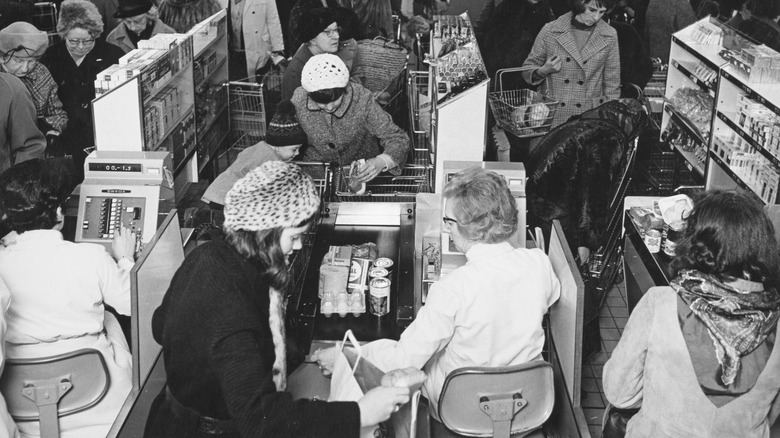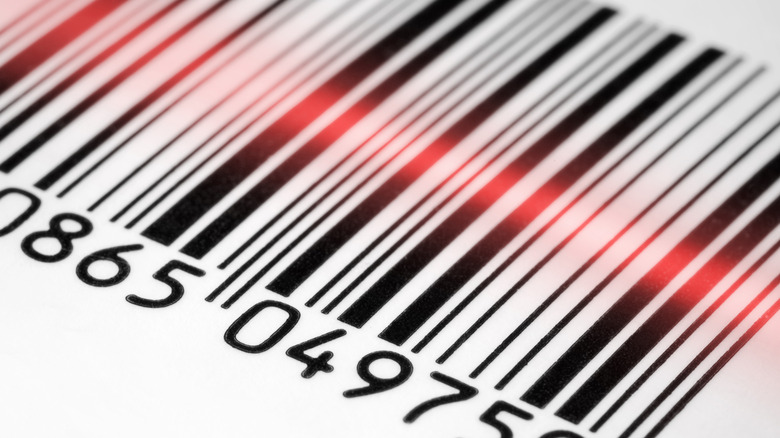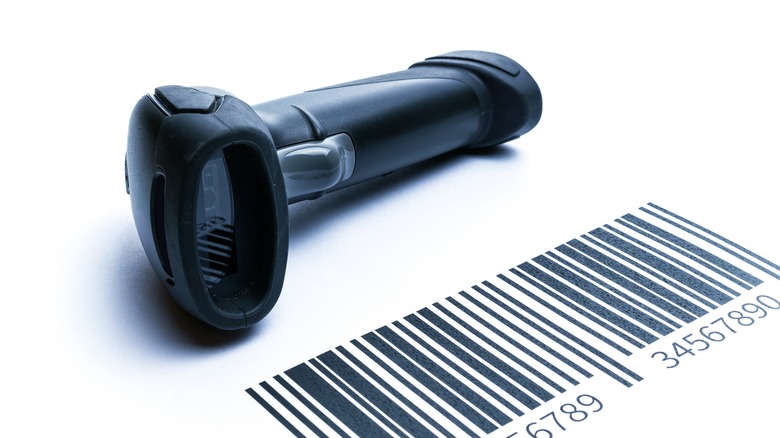The First Barcode Ever Scanned In A Grocery Store
Grocery stores used to be much less efficient than they are today. Taking product inventory and checking out with a cashier took so long that they ate into profits. In the 1940s, a Pennsylvania store manager asked the dean of a local university to help him find solutions to streamline operations. The school was Drexel University in Philadelphia, and one of its graduate students, Joe Woodland, would ultimately find a solution to the efficiency problems plaguing food markets: the barcode. Scannable barcodes on products eliminated the need for manual checkout, and also promoted faster, more accurate inventory control.
Woodland came up with the idea in 1949 while sunning himself on Miami Beach. It wasn't until 25 years later, however, that a certain grocery store would adopt barcodes. On June 26, 1974, a man named Clyde Dawson asked the cashier at a Marsh store in Troy, Ohio to scan a pack of Wrigley's Juicy Fruit chewing gum with a barcode attached. Dawson and the cashier, Sharon Buchanan, went down in history as the first people to use the innovative technology to complete a grocery store transaction. The choice of Wrigley chewing gum wasn't an accident, either. It was chosen to show that even very small items could hold a scannable barcode.
Marsh was the first store to use the new technology, and by the 1980s, barcodes were being used at grocery stores and retail businesses across America.
The evolution of the barcode
Why did Joe Woodland's barcode idea take so long to come to fruition? Just as barcodes had to be invented and perfected, so too did the technology capable of scanning them. Today, laser technology is used to scan barcodes, but the first ever laser beam didn't debut until 1960, 11 years after Woodland came up with the idea for barcodes.
Woodland finally acquired a patent for barcode technology in 1952, but the earliest lasers weren't compatible with barcode scanners, so it would be another 14 years before both barcodes and lasers came together and finally made their debut in the aforementioned Marsh grocery store.
The wait was worth it. According to 2023 estimates, barcodes are scanned 10 billion times daily in countries around the globe. The barcodes themselves vary. In the U.S., the Uniform Product Code (UPC) is the preferred barcode, a row of parallel black lines of varying widths with an accompanying 12-digit number. The exception is barcodes for books, which are given their own 13-digit International Standard Book Number (ISBN). The same digit count is used in Europe, where European Article Numbers (EAN) are the barcodes of choice.
Why the first barcodes premiered in an Ohio supermarket
The Marsh store in Troy, Ohio that introduced barcodes to America in 1974 is gone now, replaced by Needler's Fresh Market. The historic occasion is still marked by a plaque in Needler's. But why was this small town in Miami County – current population: 26,679 — picked for the honor in the first place?
Clyde Dawson, the man who asked for his Wrigley's gum to be scanned, wasn't really a customer at all. He was an executive for Marsh Supermarkets, whose Troy location had been chosen to test checkout technology from other corporations, including the National Cash Register Corporation (NCR), which had a facility nearby, and Spectra-Physics. In fact, these two companies collaborated on the checkout equipment unveiled at Marsh in June 1974. NCR provided the cash register – NCR Model 255, to be exact — while Spectra-Physics produced the laser-operated price scanner.
The importance of the moment wasn't immediately apparent. "None of us realized how big of a deal this would be," said Claude Fenstermaker, the store's assistant manager when the barcode was first used, to Dayton Daily News on the 50th anniversary of the event. "Where would we be without the UPC? It's used for everything today."



